Ayodhya Ram Mandir: A Temple of Unity and Harmony
The Ayodhya Ram Mandir is a Hindu temple that is currently under construction in Ayodhya, Uttar Pradesh, India. It is located at the site of Ram Janmabhoomi, the birthplace of Lord Rama, a principal deity of Hinduism . The temple is being built by a Hindu group under the supervision of Larsen & Toubro and other experts, and to be unveiled on 22 January 2024 for visitors . The temple is expected to become a major pilgrimage site, attracting followers from across the country. The design and architecture of the temple draw inspiration from traditional Hindu art and culture. The completion of the Ram Mandir marks a major milestone in the religious and cultural landscape of Ayodhya.
Where Is Ayodhya?
Ayodhya is a city situated on the banks of the Sarayu river in the Indian state of Uttar Pradesh. It is the administrative headquarters of the Ayodhya district as well as the Ayodhya division of Uttar Pradesh, India . Ayodhya is regarded as one of the seven sacred cities of the Hindus, revered because of its association in the great Indian epic poem Ramayana with the birth of Rama and with the rule of his father, Dasharatha . The city is also known as Saket and used to be the capital of the ancient Kosala Kingdom The Babri Masjid, a mosque built in the 16th century, was situated in Ayodhya. The disputed site became a focal point of religious and political tensions between Hindus and Muslims. In 1992, the Babri Masjid was demolished by a mob of Hindu activists, leading to widespread communal unrest.
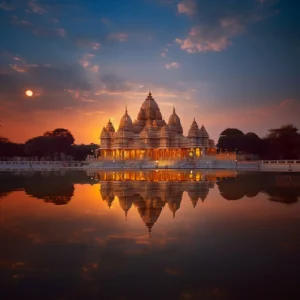
Places To Visit In Ayodhya
1. Ram Janmabhoomi Temple:
The Ram Janmabhoomi Temple is a significant religious site located in Ayodhya, Uttar Pradesh, India. It is believed to be the birthplace of Lord Rama, a revered figure in Hinduism. The temple has been a focal point of religious and historical importance, as it is associated with the epic Ramayana. The dispute involved a mosque, the Babri Masjid, that was constructed in the 16th century during the Mughal era. According to Hindu belief, the mosque was built on the exact spot where Lord Rama was born.
2. Saryu Ghat:
The Saryu river flows gently along the banks of the ghat, creating a calming sound that fits perfectly with the spiritual vibe of the place. The air smells sweet with incense, and you can hear distant temple bells, adding to the magical feeling . The river is said to have witnessed the pivotal moments of Lord Rama, making it a sacred destination for millions of devotees .
The best time to visit Ayodhya and Saryu Ghat is typically from October to March. During Diwali and Ram Navami, the Saryu Ghat Aarti is a must-experience. Try visiting during this time to get the best experience
3. Hanuman Garhi:
It is one of the most important temples in the city along with other temples such as Nageshwar Nath. This shrine is under the charge of Bairagi Mahants of Ramanandi Sampradaya and Nirvani Akhara . The temple is shaped like a four-sided fort with circular ramparts at each corner, housing shrines dedicated to the primary deity Hanuman. There are 76 stairs to reach the main temple, where the garbha griha, adorned with silver carvings, awaits. The central has three intricately designed doors leading to the inner chamber. Within, a 6-inch deity of Hanuman, depicted in his youthful (Bal) form, is positioned on the lap of his mother Anjani. A silver tulsi garland, inscribed with the name of Rama is adorned by Hanuman. The verses of the Hanuman Chalisa are inscribed on the temple walls. The temple features a Victory Pillar, known as Vijay Stambh.

4. Kanak Bhavan:
It is one of the finest and famous temples in Ayodhya and is a must-visit. It is believed that this Bhawan was gifted to Devi Sita by Kaikei immediately after her marriage to Lord Ram. This is private palace of Devi Sita and Lord Rama. Vikramaditya got it renovated. Later it was rebuilt/renovated by Vrish Bhanu Kunwari which exists even today. The main idols installed in the garbhgrih (sanctum), are of Lord Ram and Devi Sita.

5. Treta Ke Thakur:
It is believed to have been constructed 300 years ago by Kullu, the king of the time . The temple houses numerous idols including that of Lord Ram, Sita, Lakshman, Hanuman, Bharat and Sugreev. These statues are said to have been sculpted out of a single black sandstone . It is open to the public only once a year on a day marked as the Ekadashi. This day is observed on the Shukla Paksha’s eleventh day during the month of Karthika according to the Hindu calendar. The temple is associated with the Treta Yuga, the era in which the events of the Ramayana, an ancient Hindu epic, are believed to have taken place. Lord Rama, an avatar of Lord Vishnu, is a central figure in the Ramayana.

6. Sita Ki Rasoi:
Sita Ki Rasoi is a temple located in Ayodhya, Uttar Pradesh, India. It is situated on the north-western side of the Ram Janmanhoomi in Ayodhya’s Rajkot and is believed to be an ancient kitchen used by goddess Sita herself. This sacred site is now a temple housing some exhibit vessels. One among the two kitchens revered in Sita’s name, this Sita Ki Rasoi is a basement kitchen. The other end of the temple cites the richly clothed and embellished idols of Ram, Lakshman, Bharat and Shatrughan and their wives Sita, Urmila, Mandavi and Srutakirti. Worshipped as the Goddess of Food, Sita is also known as Goddess Annapurna. Thus, the temple follows this tradition by offering free food. Visitors can also donate any amount of money for charity here.
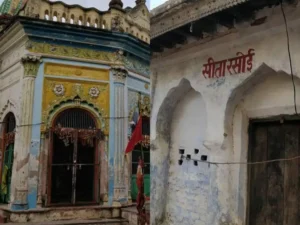
7. Nageshwarnath Temple:
Nageshwarnath Temple is believed to have been set up by Kush or Kusha, Lord Rama’s son . Legend has it that Kush lost his armlet while bathing in the Saryu river, which was picked up by a Nag-Kanya who fell in love with him. As she was a devotee of Shiva, Kush erected this temple for her . The temple is dedicated to Lord Nageshwarnath, the local deity, and is said to have been established in the 7th century AD . The temple is a prime attraction of Ayodhya and is open to the public .
8. Mani Parbat and Sugriv Parbat:
Mani Parbat and Sugriv Parbat are two hillocks located in Ayodhya. According to the Hindu epic Ramayana, Lord Hanuman uprooted an entire mountain containing the rejuvenating sanjeevani booti to treat Lakshman who was wounded in a battle by Meghnath. It is believed that a part of the mountain fell at a place in Ayodhya which is called Mani Parbat. It lies close to another mound called Sugriv Parbat. Mani Parvat is a tiny hillock situated in Kami Ganj, Ayodhya. It is one of the popular religious places to visit in Ayodhya. Situated about 65 feet above sea level, Mani Parvat has a great religious significance. The hillock also houses a stupa built by Emperor Ashoka and a Buddhist monastery. One can get a spectacular view of the city of Ayodhya and the surrounding areas from the top of the hillock . Sugriv Parvat is believed to be an ancient monastery and is located quite close to Mani Parbat.
9. Chhoti Devkali Mandir:
Chhoti Devkali Mandir is situated close to Naya Ghat and is associated with numerous fables from the Hindu epic, Mahabharat. According to mythology, Mother Sita arrived at Ayodhya with an idol of goddess Girija Devi after her wedding with Lord Ram. It is believed that King Dashrath got a beautiful temple constructed and the idol was established in the sanctum sanctorum. Mother Sita used to worship here every day. It is presently dedicated to goddess Devkali and hence the name . The temple is open to the public and has a daily schedule for darshan and aarti.
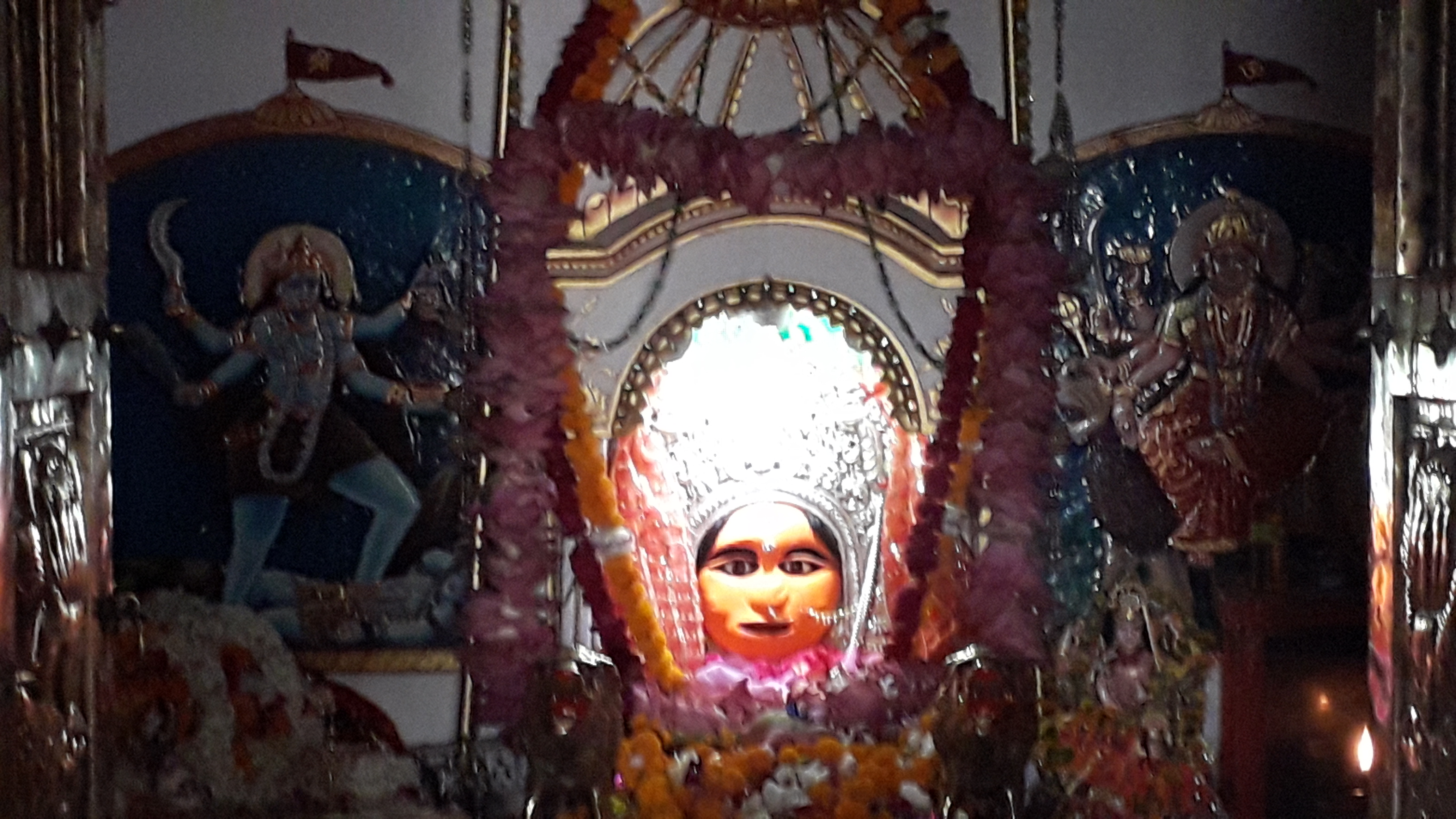
Timings: Open from 4:30 AM to 11:00 AM in the morning and from 3:30 PM to 9:00 PM in the evening.
10. Bahu Begum ka Maqbara:
Bahu Begum ka Maqbara is the tomb of Begum Unmatuzzohra Bano, the wife of Nawab Suja-ud-Daula . The mausoleum was commissioned by Nawab Suja-ud-Daula in the memory of his loving wife and was constructed in 1816 for the staggering sum of three lakh rupees . The monument is one of the tallest buildings in the Ayodhya district and is a notable example of non-Mughal Muslim architecture . The mausoleum is open to the public and is one of the popular heritage places in Uttar Pradesh .
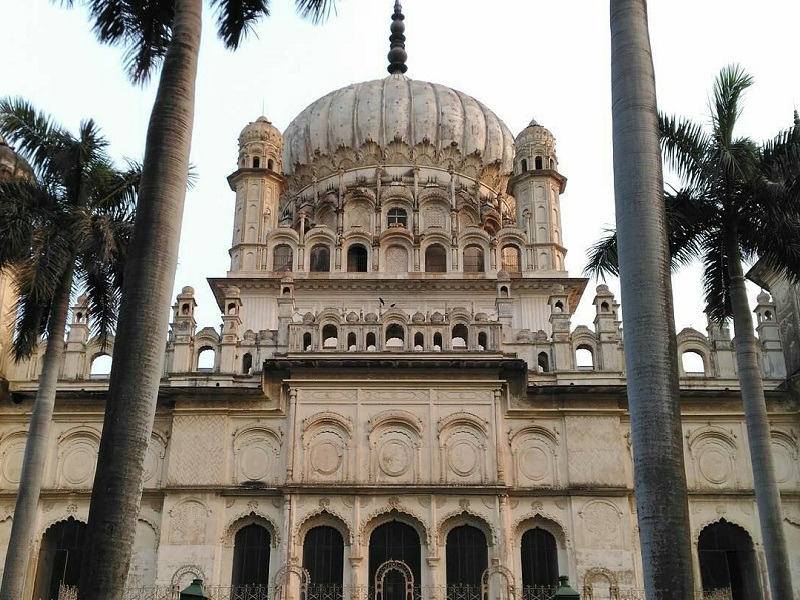
11. Kausalya Bhavan:
Kausalya Bhavan is believed to be the palace of Queen Kausalya, Lord Rama’s mother. The architecture reflects a blend of Hindu and Islamic styles, showcasing the city’s eclectic history. According to Hindu scriptures, Ayodhya is the birthplace of Lord Rama, and Queen Kausalya played a significant role as the mother of Lord Rama. Kausalya Bhavan is believed to be the place where Queen Kausalya resided. The Ramayana, an ancient Hindu epic, narrates the life and adventures of Lord Rama. The city of Ayodhya and its royal palace, including Kausalya Bhavan, are central to the Ramayana’s narrative.

12. Ammaji Mandir:
Ammaji Mandir is a temple located in Ayodhya, Uttar Pradesh, India. It is situated close to Naya Ghat and is associated with numerous fables from the Hindu epic, Mahabharat. According to mythology, Mother Sita arrived at Ayodhya with an idol of goddess Girija Devi after her wedding with Lord Ram. It is believed that King Dashrath got a beautiful temple constructed and the idol was established in the sanctum sanctorum. Mother Sita used to worship here every day. It is presently dedicated to goddess Devkali and hence the name . The temple is open to the public and has a daily schedule for darshan and aarti.
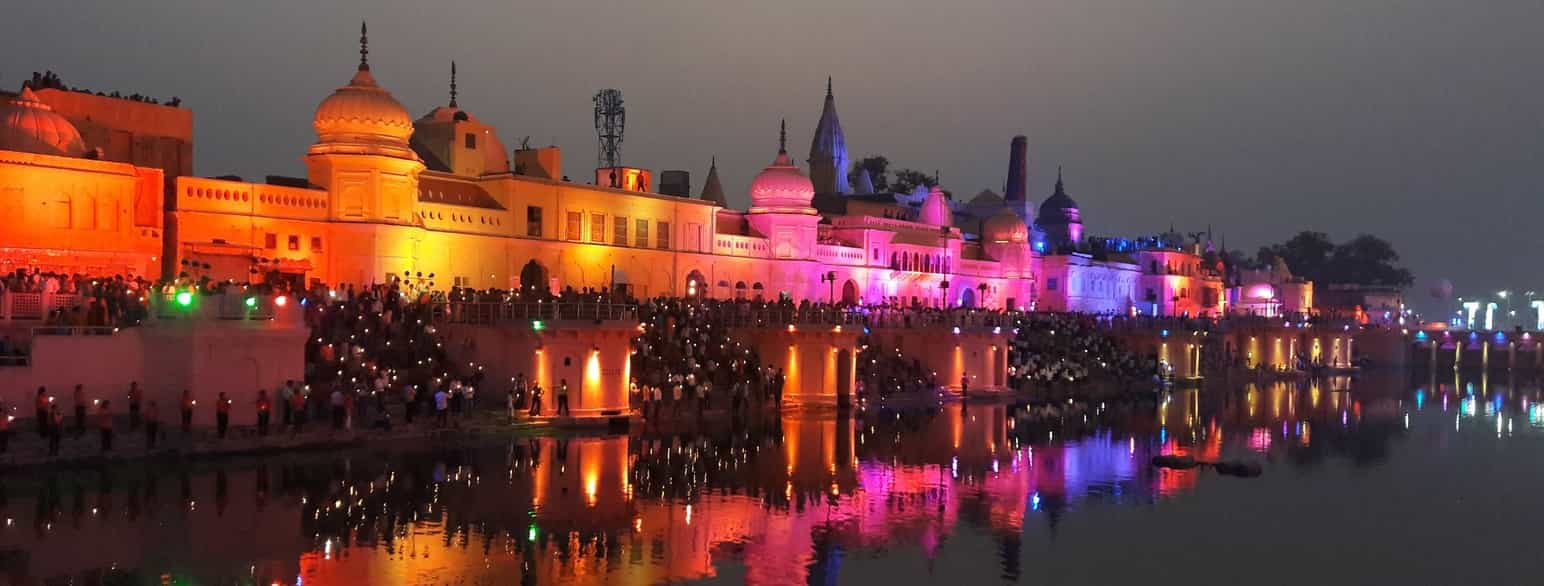
Timings: Open from 4:30 AM to 11:00 AM in the morning and from 3:30 PM to 9:00 PM in the evening.
13. Swaminarayan Temple:
Swaminarayan Temple is situated at the Patrapur Road in Ayodhya and is home to beautifully carved idols of Radha Krishna Deva and Harikrishna Maharaj . The temple was originally home to Shri Swaminarayan who shifted to Ayodhya from Chhapaiya . The temple is open to the public and has a daily schedule for darshan and aarti.

Timings: Open from 6:00 AM to 12:00 PM in the morning and from 4:00 PM to 8:00 PM in the evening.
14. Shri Kale Ram Temple:
Shri Kale Ram Temple is the only temple that depicts the idol of Lord Rama along with his brothers Bharata, Lakshmana and Shatrughna. The temple also has idols of Lord Hanuman and Goddess Sita . The temple is widely known in and outside of India and is considered to be the most important temple in Ayodhya . The temple is open to the public and has a daily schedule for darshan and aarti.

Timings: Open from 4:30 AM to 11:00 AM in the morning and from 3:30 PM to 9:00 PM in the evening .
How To Reach Ayodhya
Ayodhya is a city located on the banks of the Sarayu river in the Indian state of Uttar Pradesh. It is the administrative headquarters of the Ayodhya district as well as the Ayodhya division of Uttar Pradesh, India .
- By Train: Ayodhya has two nearest railway stations: Ayodhya Dham Junction railway station is 2 km from the temple and Ayodhya Cantt railway station, which is 11 km away from Ram Janam Bhumi. Both are well-connected to several cities. These railway stations provide several train services, making it easy for travelers to reach Ayodhya from anywhere in the country .
- By Air: Lucknow International Airport is the nearest airport to Ayodhya, which is 150 km from Ram Mandir. Maharishi Valmiki International Airport Ayodhya is also ready to provide flight services from many places in the country. Given the program of January 22, requests for the landing of more than 40 chartered flights have been received so far. 1st Januray 2024 onwards flights from major cities has been started.
- By Road: Ayodhya is well-connected by road to major cities in Uttar Pradesh. Tourists can book a cab from any major city nearby like Faizabad (7 km), Allahabad (166 km), Lucknow (134 km), and Varanasi (209 km) .
How To Get the Prasad of Ram Mandir Delivered to Your Home
Khadi Organic has introduced a distinctive initiative, allowing devotees to receive the sacred prasad of Ram Mandir delivered to their homes. Crafted from pure ingredients and prepared following traditional methods, these prasads are presented in beautifully designed boxes, making them an ideal gift for your loved ones.
Ayodhya weather & tempreture
The summers are much rainier than the winters in Ayodhya. The average temperature in Ayodhya is 25.0°C or 77.0°F . Based on annual weather averages for Ayodhya, the best month to go for holiday is January and December. The temperature hovers around 16°C .


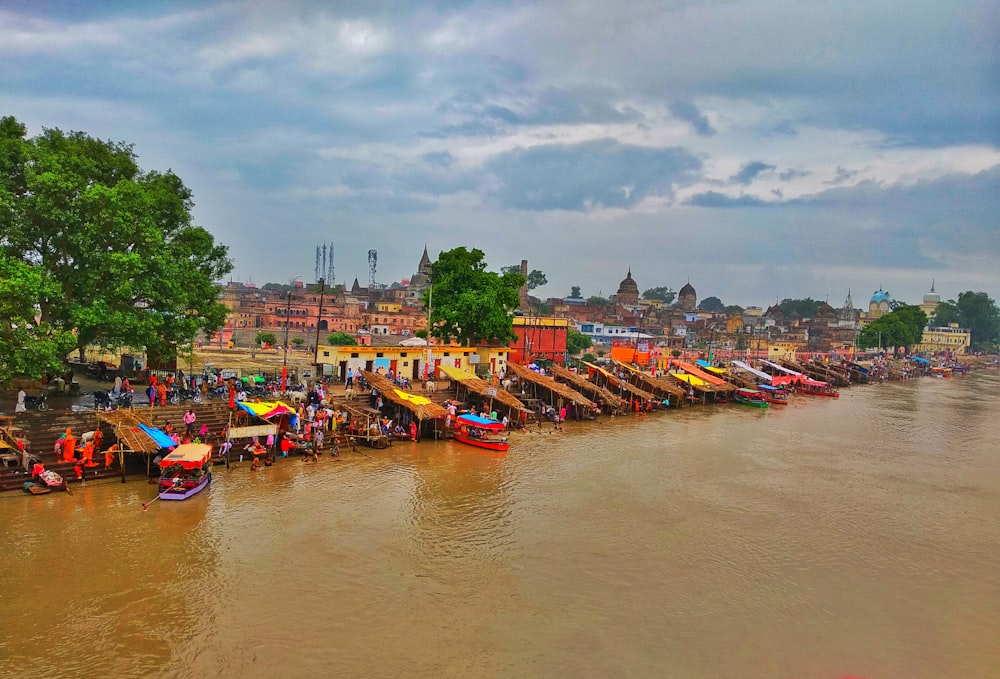





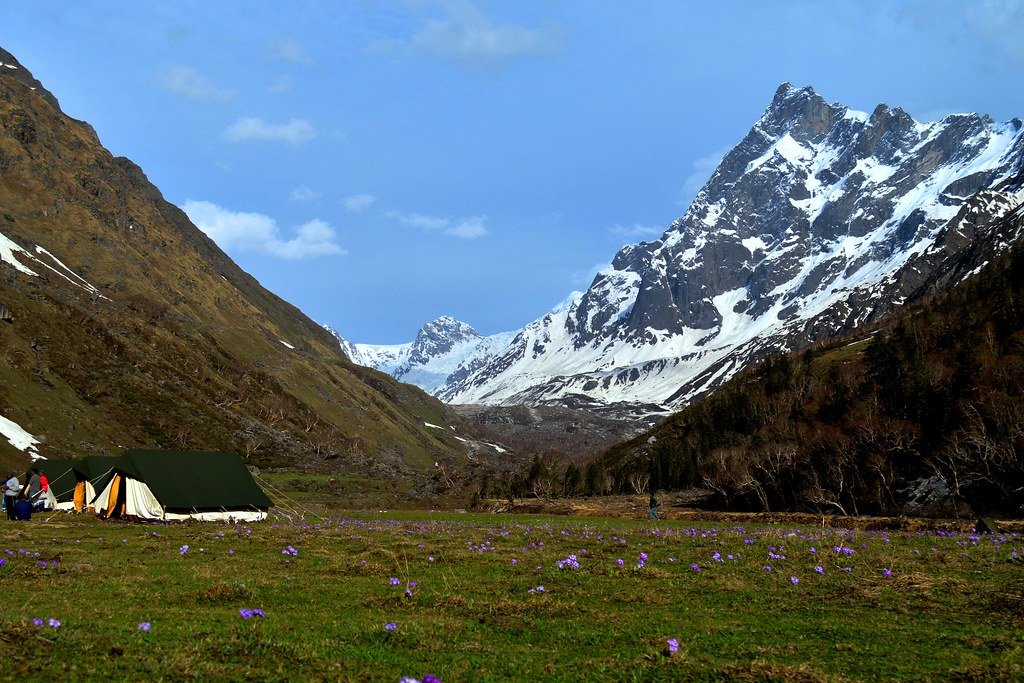
Pingback: Bhojpur | Best Places To Visit | How To Reach | Bhojpur T
Pingback: Places To Visit In Kushinagar | Things To Do